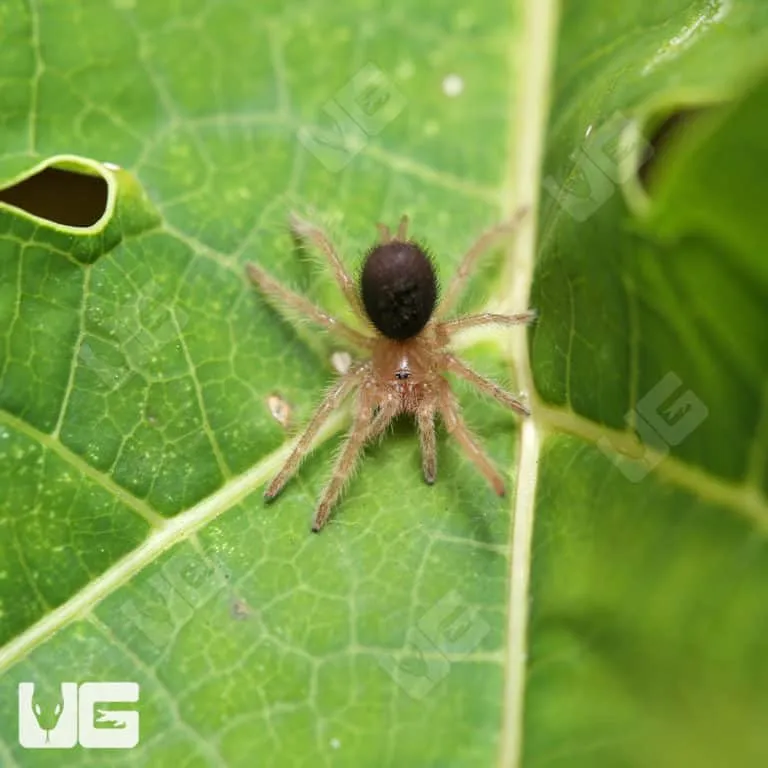Why Buy a Female Chaco Golden Knee Tarantula?
The Female Chaco Golden Knee Tarantula (Grammostola pulchripes) is a popular choice for both novice and experienced tarantula keepers. Their striking appearance, relatively docile temperament, and manageable care requirements make them an appealing pet. Choosing a female offers the advantage of a longer lifespan compared to males, allowing for a more extended period of enjoyment and observation of these fascinating creatures. They are known for their beautiful golden knee markings, a vibrant contrast against their dark bodies, which add to their aesthetic appeal. Beyond their looks, female Chaco Golden Knees are typically less prone to wandering or exhibiting erratic behavior, contributing to their suitability for captive environments. Buying a female now gives you the opportunity to enjoy all those features.
Appearance and Characteristics
The Chaco Golden Knee Tarantula is instantly recognizable due to its striking appearance. As the name suggests, the most prominent feature is the vibrant golden coloration on the patellae (knees) of their legs, creating a bold contrast against their black or dark brown bodies. Their carapace, the top of their cephalothorax, is typically a rich brown color. Females exhibit a more robust build compared to males, who often appear more slender. The abdomen is covered in fine hairs, and the overall size and coloration can vary slightly depending on the individual’s age and genetics. Their presence is very attractive and eye catching, especially to those who are into arachnids. Seeing the tarantula is a great experience and it is important to take a look into it.
Size and Lifespan
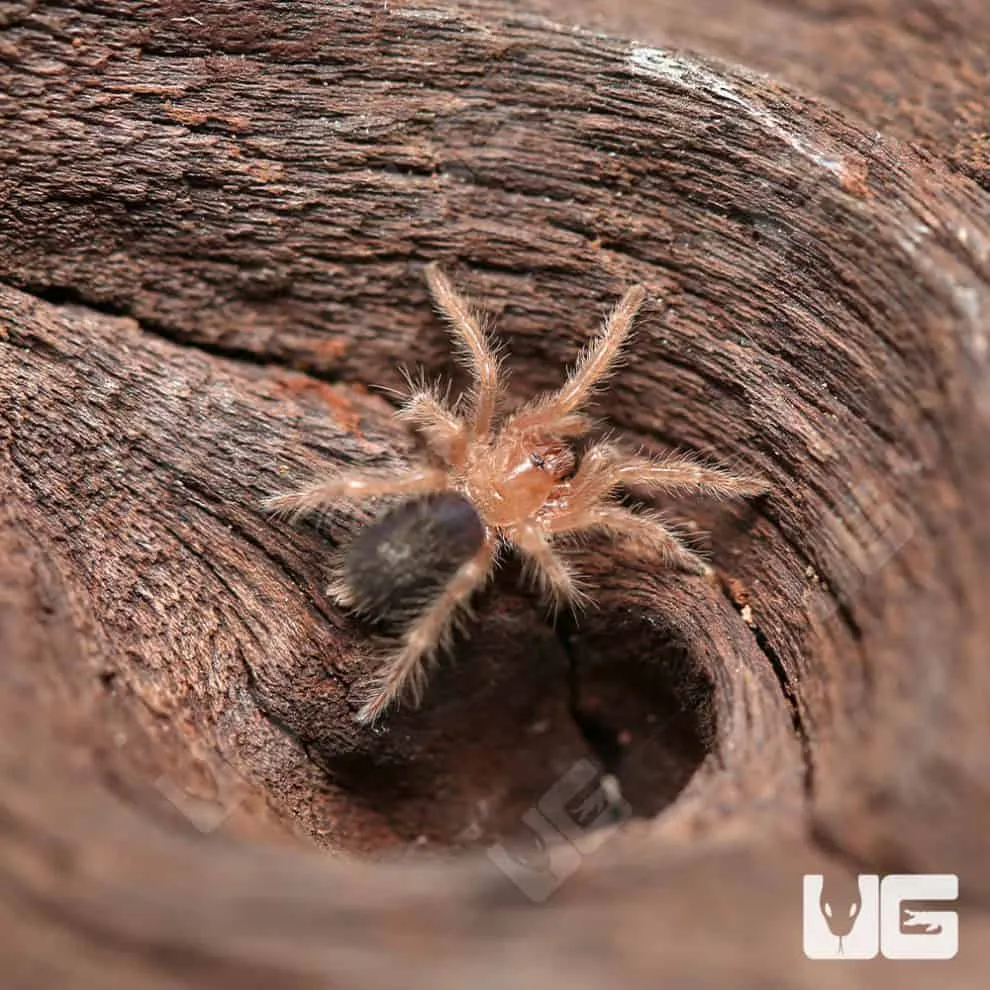
Female Chaco Golden Knee Tarantulas typically reach a leg span of up to 7-8 inches, making them a medium-sized tarantula. Their size, while substantial, is manageable, making them relatively easy to house and care for. A significant advantage of choosing a female is their extended lifespan. Females can live for 15-20 years, providing a long-term companionship for tarantula enthusiasts. This longevity is a considerable benefit compared to male tarantulas, which often live for a much shorter time. Their longer lifespan allows keepers to observe the tarantula’s growth and behaviors over an extended period. This makes them a great pet for those who are into spiders and arachnids.
Temperament and Handling
Chaco Golden Knee Tarantulas are generally known for their docile temperament, making them a good choice for beginner tarantula keepers. However, it’s important to remember that they are still wild animals and should be handled with caution. They may exhibit defensive behaviors if they feel threatened, such as flicking urticating hairs from their abdomen or rearing up in a threat posture. Avoid handling them unnecessarily. If handling is required, do so gently and close to the ground to minimize the risk of injury if the tarantula were to fall. Always be respectful of their space and behavior. Understanding their temperament is key to safe and enjoyable interactions. This tarantula is generally harmless and can be a nice pet.
Caring for Your Female Chaco Golden Knee Tarantula
Providing proper care is crucial for the health and well-being of your female Chaco Golden Knee Tarantula. This includes creating a suitable enclosure, maintaining optimal environmental conditions, and offering a balanced diet. Regular monitoring of the tarantula’s behavior, eating habits, and overall appearance can help identify any potential health issues early on. Proper care extends to ensuring that the enclosure is secure and escape-proof, preventing any unexpected incidents. Regular cleaning of the enclosure, including the removal of uneaten food and waste, is essential to maintain a clean and healthy environment. Providing a water dish is also important for them to stay hydrated.
Enclosure Setup Essentials
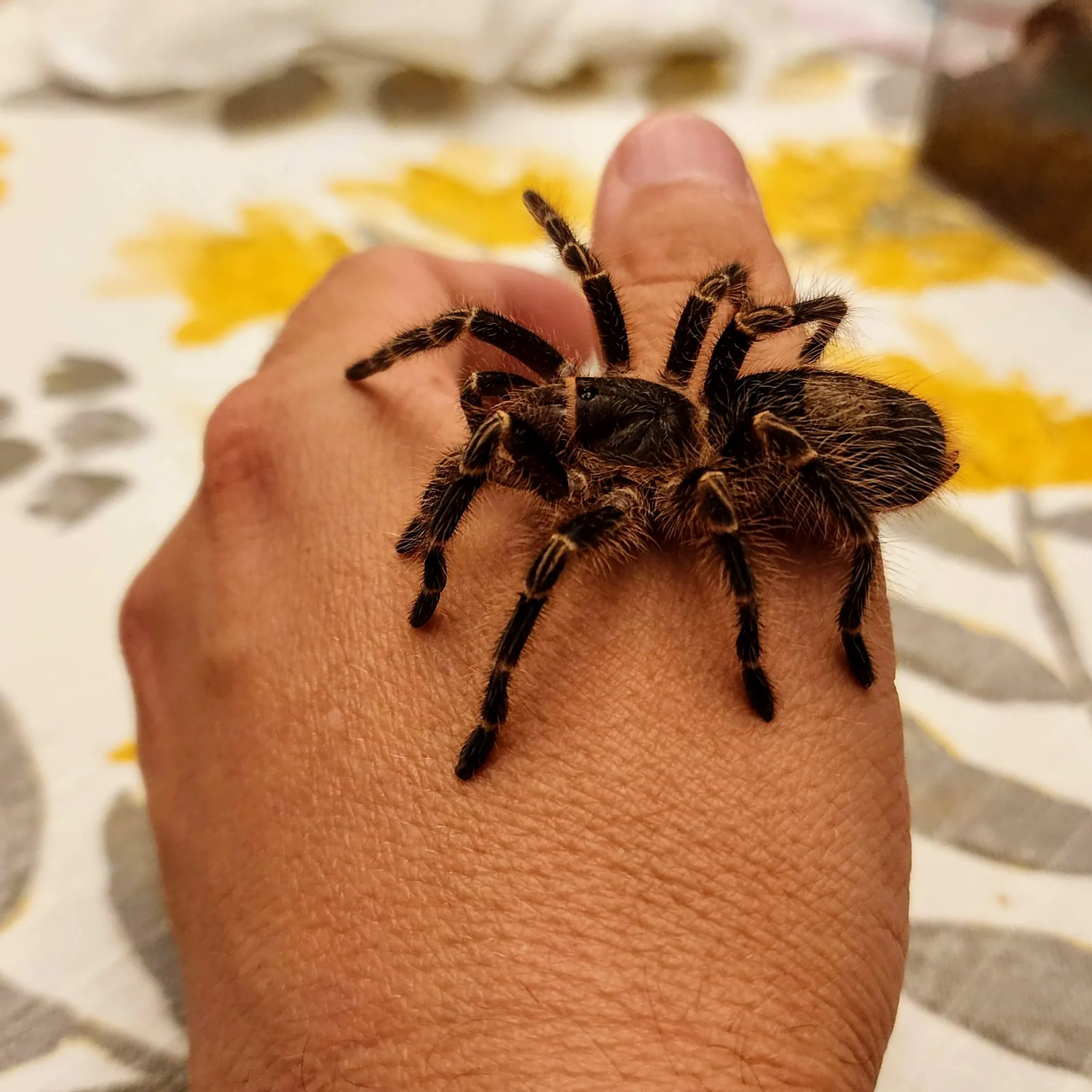
The enclosure setup plays a critical role in the well-being of your Chaco Golden Knee Tarantula. A glass or plastic terrarium is ideal, providing clear visibility and adequate ventilation. The size of the enclosure should be appropriate for the tarantula’s size; a 10-gallon tank is generally suitable for a juvenile, while a 20-gallon long tank is often recommended for adults. A secure lid is a must to prevent escapes, and it should allow for proper airflow. Include a substrate, such as coconut fiber or a mixture of peat moss and vermiculite, to provide a natural environment and aid in burrowing if the tarantula chooses. The substrate should be deep enough (around 4-6 inches) to allow the tarantula to dig and feel secure. Include also some elements like a hide or a shelter, for the spider to feel secure.
Substrate and Environment
The substrate and environmental conditions significantly impact the health of your tarantula. A substrate that retains some moisture is essential to help with humidity, but it shouldn’t be overly damp. Coconut fiber is a popular choice because it holds moisture well and is safe for tarantulas. Maintain a humidity level between 60-70% for optimal comfort, which can be achieved by lightly misting the enclosure with dechlorinated water every few days. The temperature should be maintained between 75-85°F (24-29°C). Avoid direct sunlight, and provide a hide or shelter for the tarantula to retreat to. Regular monitoring of both temperature and humidity is essential to ensure the environment stays within the optimal range. They are important parts of the tarantulas comfort and health.
Feeding and Diet
Feeding your Chaco Golden Knee Tarantula involves providing a diet consisting of appropriate insects. Crickets, mealworms, and roaches are common choices. The size of the prey should be appropriate for the tarantula’s size; juveniles should be fed smaller insects, while adults can handle larger prey. The frequency of feeding depends on the tarantula’s age and appetite. Generally, juveniles should be fed a few times a week, while adults can be fed once or twice a week. Always remove uneaten prey within 24 hours to prevent stress. Provide a shallow water dish with clean water at all times, and ensure that the water is regularly replaced. This ensures proper hydration for the tarantula. Monitor their behavior and eating habits to adjust the feeding schedule.
Common Health Issues and Prevention
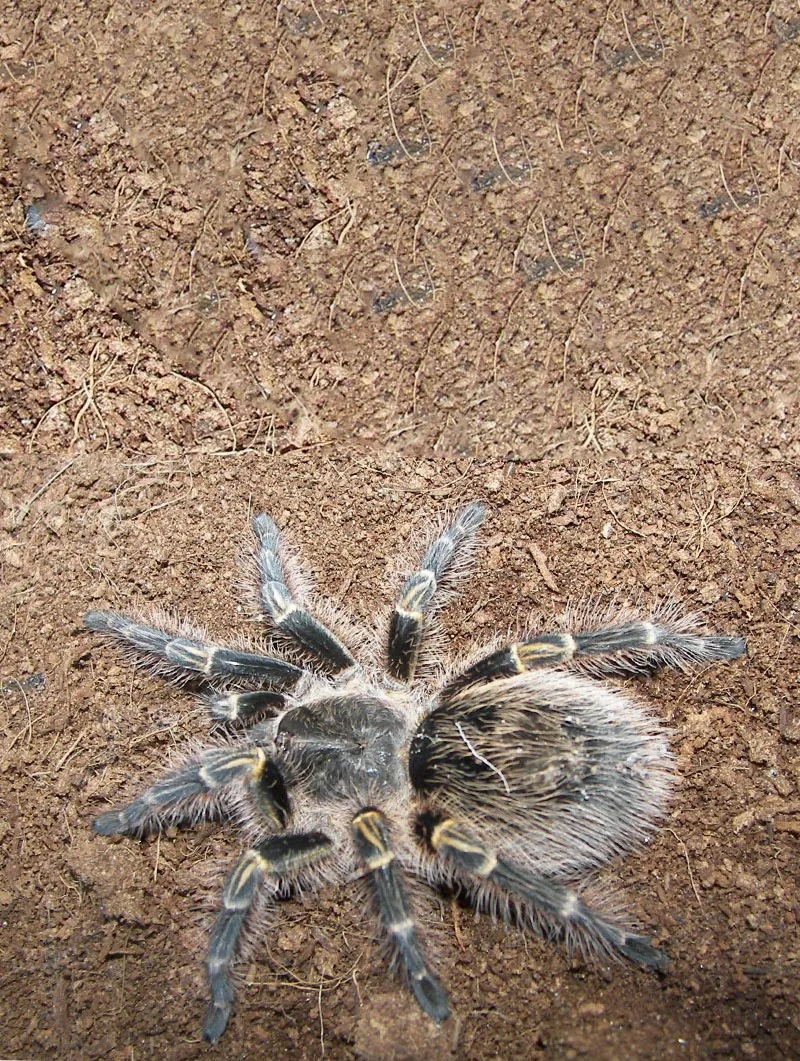
While relatively hardy, Chaco Golden Knee Tarantulas can be susceptible to certain health issues. Dehydration is a common problem, so ensure they always have access to clean water. Improper humidity levels can lead to molting problems. Bacterial or fungal infections can arise from a dirty enclosure, so proper hygiene is essential. Parasites are another concern. Regular observation of your tarantula is key. If you notice any unusual behavior, such as lethargy, loss of appetite, or difficulty molting, consult a veterinarian experienced in exotic animals. Preventing health issues starts with proper care, including maintaining the appropriate environment, a balanced diet, and a clean enclosure. Take all the necessary precautions.
Where to Buy a Female Chaco Golden Knee Tarantula
There are several options for purchasing a female Chaco Golden Knee Tarantula. Reputable breeders and specialized pet stores are excellent sources. Researching breeders and reading reviews can help you find a reliable source. Online marketplaces and classified ads offer a wide selection, but you should exercise caution and thoroughly vet the seller. Look for sellers who provide detailed information about the tarantula’s age, origin, and health. Always prioritize sellers who prioritize the well-being of their animals. Ensure the tarantula is properly packaged and shipped, and that the seller offers a live arrival guarantee. You must know from where you buy, and always seek for reputable sellers.
Reputable Breeders and Sellers
Choosing a reputable breeder or seller is critical to ensure you acquire a healthy and well-cared-for tarantula. Look for breeders with positive reviews, who are knowledgeable, and willing to answer your questions. Reputable sellers will have a good reputation and be passionate about the well-being of their tarantulas. They should be able to provide information about the tarantula’s lineage, age, and health history. Check for certifications or affiliations with reputable organizations. Avoid sellers who seem secretive or are unwilling to provide detailed information. A good seller will prioritize the health and welfare of the tarantula above all else, offering you a healthy and properly cared-for specimen. Do your research before making any purchase.
Online vs Local Purchases
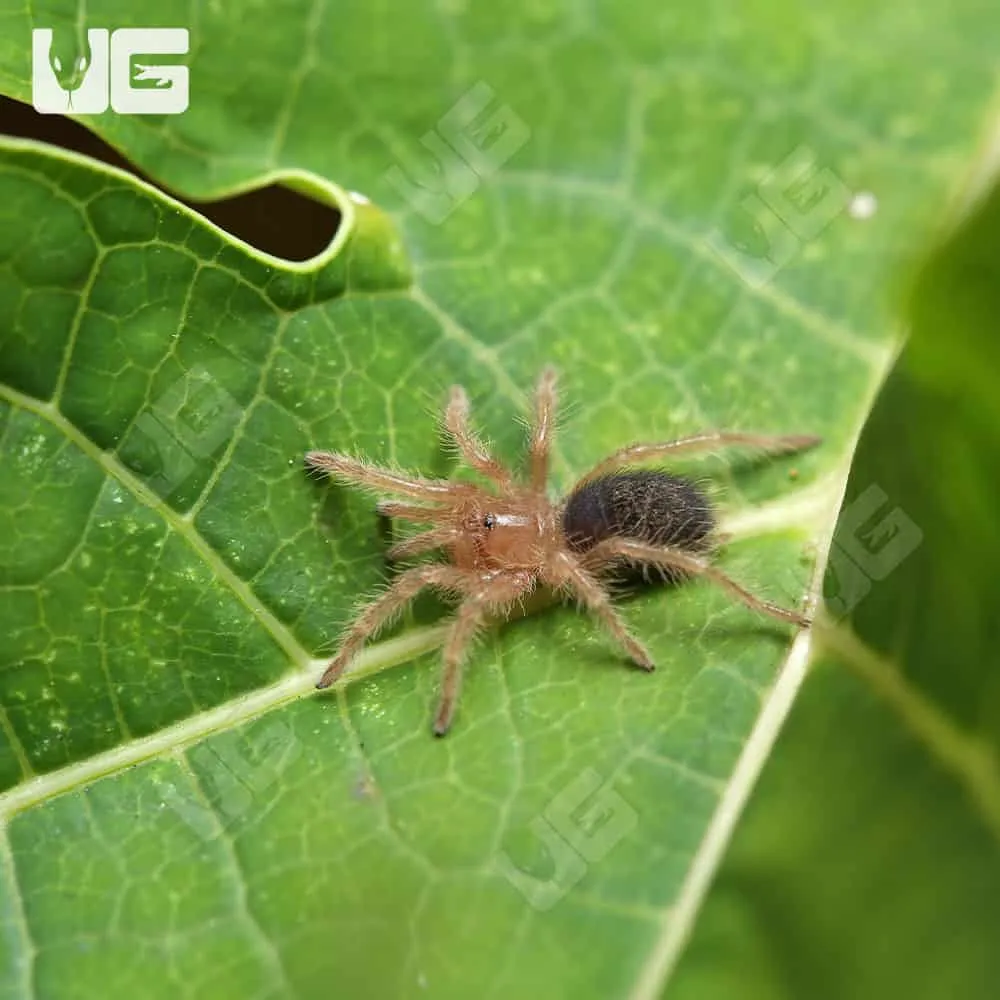
Both online and local purchases have pros and cons. Local pet stores allow you to inspect the tarantula in person, assess its health and behavior, and get immediate advice from staff. However, the selection may be limited, and prices may be higher. Online purchases offer a wider variety and often more competitive prices. However, you cannot visually inspect the tarantula before buying it. Ensure the seller provides a live arrival guarantee and has a strong reputation. When purchasing online, review the seller’s shipping practices to ensure the tarantula will be transported safely. Consider the shipping time and the potential stress on the tarantula. Weigh these factors carefully when deciding where to buy your female Chaco Golden Knee Tarantula.
